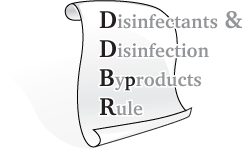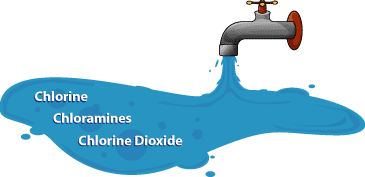Course Glossary
This shows the specialized terms used in EarthWise Academy. This section contains all the definitions used in the various course glossaries used by each course.
Special | A | B | C | D | E | F | G | H | I | J | K | L | M | N | O | P | Q | R | S | T | U | V | W | X | Y | Z | ALL
Entries starting with: D |
|---|
D SampleSample collected from the distribution system.
|
D Sampling SitesRepresentative sites within the distribution system.
|
DBP Rule
DBP Rule - Disinfectants and Disinfection Byproducts Rule
|
DBPs
|
DBTDBT - Design Basis Threat Description of a specific adversary and mode of attack that has a degree of likelihood of occurring.
|
DenitrificationAn anoxic process that occurs when nitrite or nitrate ions are reduced to nitrogen gas and nitrogen bubbles are formed as a result of this process.
|
DenitrifiersFacultative heterotrophic bacteria (such as Pseudomonas, Bacillus and Achromobacter) that convert nitrate in wastewater to nitrogen gas, given an anoxic environment.
|
Denitrifying bacteriaAlso known as denitrifiers. Specialized bacteria (such as Pseudomonas and Achromobacter) that convert nitrate in wastewater, into nitrogen gas.
|
DEPDEP - Department of Environmental Protection
|
Department of Environmental ProtectionDepartment of Environmental Protection (DEP)
|
Design Basis ThreatDesign Basis Threat (DBT) Description of a specific adversary and mode of attack that has a degree of likelihood of occurring.
|
DestabilizedA condition in which the electrical charge of particles has been neutralized.
|
Detected ContaminantAny contaminant detected at or above its detection limit.
|
Detection LimitThe amount of a substance with that EPA has determined to be the minimum concentration that can be measured and reported with 99% confidence that the true value is greater than zero.
|
Detention TimeThe theoretical time that a parcel of water or other liquid spends in a particular treatment unit or reservoir.
|
Diatomaceous EarthA fine material made up mostly of the skeletal remains of single cell, microscopic algae with a rigid, box-like internal structure consisting mainly of silica.
|
Digester CapacityThe total volume in gallons that a digester(s) can hold, or the volume used during the monitoring period, if not operating at full capacity.
|
Discharge Monitoring ReportDischarge Monitoring Report (DMR) |
DisinfectantsSubstances that are added for the purpose of killing or inactivating the pathogenic (disease-causing) bacteria found in water.
|
Disinfection Byproducts PrecursorsOrganic substances that combine with disinfectants to form potentially carcinogenic compounds such as HAA5’s and TTHM’s.
|
Dissolved OxygenDissolved Oxygen (DO) A measure of the amount of free or molecular oxygen dissolved in water, expressed as:
|
DMRDMR – Discharge Monitoring Report
|
DODO - Dissolved Oxygien
|
Double Layer CompressionIn the double layer compression mechanism large quantities of a salt that has no charge (neutral) are added. The salt works by compressing the double layer around the colloid. When the outer layer is compressed, the repulsive energy barrier around the colloid is reduced or eliminated. This allows the particles to combine.
|
Drinking Water Electronic Laboratory ReportingDrinking Water Electronic Laboratory Reporting (DWELR) A web-based application that provides a means for laboratories that are accredited by or registered with DEP’s Bureau of Laboratories to submit their drinking water sample data to DEP’s public drinking water program.
|
DWELRDWELR - Drinking Water Electronic Laboratory Reporting A web-based application that provides a means for laboratories that are accredited by or registered with DEP’s Bureau of Laboratories to submit their drinking water sample data to DEP’s public drinking water program.
|




